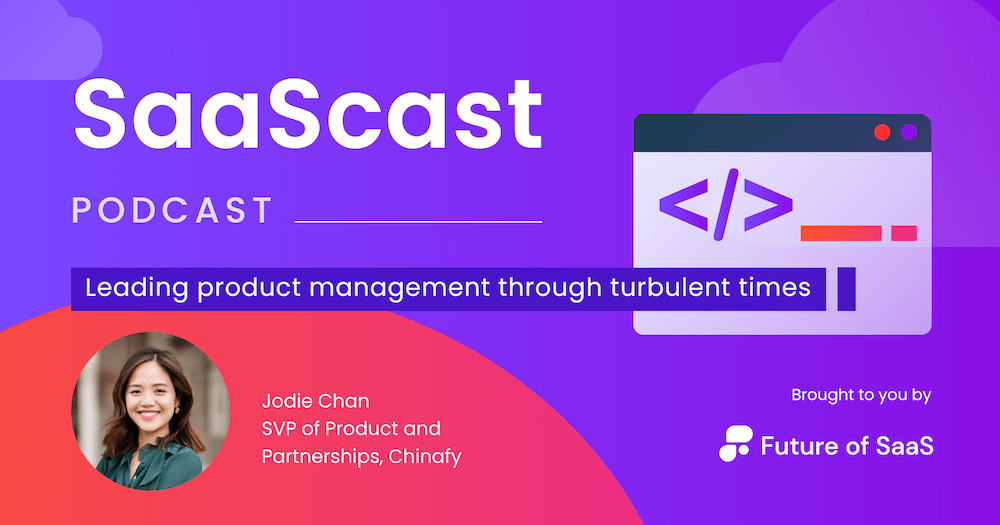Bad news first: 90% of startups fail, with 70% of them failing in the first two to five years.
The good news: the vast majority of these failings are due to short-sighted errors from the C-Suite.
We know what you’re thinking, how is this good news? Because it’s within our control to anticipate and rectify mistakes. While it’s true that competition in the SaaS market is fierce, there are steps you can take to give your product the best shot at SaaS super stardom.
🎵 “When the going gets tough, the tough get going.” 🎵
So, see how you can toughen up your growth strategies, and get your SaaS journey going.
Mistake one: Failure to gauge the market
According to CB insights, the number one reason why startups fail is due to misreading market demand.
When you’ve totally fallen in love with a new idea, you know what they say: love is blind. Meaning, once you’ve gotten completely carried away with it, you can become pretty blind to its shortcomings.
You might love your idea, but ask yourself this: is the market going to love it? Have you conducted meticulous research to ensure that your product is fixing a real problem that real people are having, not a fantasy problem?

This is the difference between a product that’s going to make prospects stop and stare momentarily and a product that’s going to make people take the time to adopt it, and better yet, actually become a paying customer.
Remember: your product pitch creates friction in the day of a potential user. Adopting and onboarding with your solution is going to take time out of their day. In order to make it worth their while, the problem that you’re solving better be bigger than the problem you're creating at the moment.
In a nutshell, think of the product ideation process like this:
1. Highlight problem
2. Identify solution
3. Create product
4. Monetize product
And don’t think of it like this:
1. Create a product
2. Make up a problem relating to the product
3. Identify solution
4. Monetize
Case study: Google Glass
Remember Google Glass? Nope? We wouldn’t blame you. Although the truth is, Google Glass was the most talked about product around at the time of its launch.
A pair of wearable smart glasses that allow users to pull up search results with the use of their voice alone, what could possibly go wrong? Well, as it turns out… nothing.
The issue wasn’t that there was anything wrong with Google Glass, but rather that the device didn’t solve any problem that a smartphone or a laptop isn’t able to solve at a similar pace.
Google Glass is the textbook example of a slick-looking product that fails because it doesn’t solve a tangible problem that isn’t already being solved efficiently.
While owning a device that makes you look like a Star Trek character might seem really cool in your fantasies, it’s the problems you can solve in reality that are going to find a place in the market.
Mistake two: Insufficient funds or careless spending
Running a SaaS company is an expensive endeavor. Eventually you’re going to have to put your money where your mouth is.
This might be through investment, bootstrapping, crowdsourcing, or however else you plan to fund your passion project.
The first step to ensure that you have an accurate – or as close you can get to – idea of what it’s going to cost to launch. What software and tools are you going to need to build and maintain it, how many departments will you need, and how big will they need to be?

The second pitfall to come is the potential misspending of funds.
For example, many startups will spend too much on paid marketing channels rather than leveraging their organic channels to maximum effect. Or, they might spend too much on customer acquisition and not enough on customer retention.
Loyal customers can be an extremely cost-effective tool for attracting new prospects. You should be spending on strategies that are going to allow your org to grow efficiently and sustainably over time.
So, in short:
- Have a firm plan for how you’re going to fund the project
- Know exactly what you’re spending on and why
- Have a back up plan for how to raise capital if investment falls through.
Case study: ScaleFactor
Scalefactor was a finance software platform that was able to raise $100m in investment. So, how did it all go wrong? ScaleFactor was spending too much on costly marketing strategies and not enough on actually ensuring their product was able to serve customer needs.
Effective marketing is essential, obviously, but your product must be able to deliver on the promise of your marketing efforts. Sensible distribution of funds is essential for success.
Mistake three: Not keeping an eye on the competition
Personally, we love that the world of SaaS is thriving with eager players, but for a new startup it can be pretty daunting.
Let’s say your product is solving a very tangible problem, great! But now let’s say that there are already hundreds of reputable brands out there offering exactly the same solution.
Having an awareness of the competition needs to occur in the ideation phase, when you’re conducting your preliminary research.

Knowing that there are products out there that claim to solve the problem you’re solving can be encouraging, as it proves that your product is going to have a very real use case.
But in order to avoid your product getting drowned out in the noise of the busy SaaS market, you need to map out your potential competitors diligently and make a note of the gaps in their product’s value.
Are there benefits that all of your competitors are missing (perhaps there are several) and how can your product address the gaps in the market?
Case study: Tutorspree
Tutorspree offered to connect users with tutors across the globe in a wide variety of different disciplines.
It’s a viable idea, but the problems occurred because the founders had little knowledge of the tutoring market, which is highly competitive, and they didn’t conduct the research in order to identify their own weaknesses in relation to their competitors.
An essential part of competitor research is not only identifying your competitors’ weaknesses, but also identifying your own. How can you upskill in order to outskill?
Mistake four: Pricing issues
Pricing is a tough nut to crack: price too high and you risk repelling many potential prospects, but price too low and you risk devaluing your product and failing due to the cost inherent in building and launching a product.
Getting this right all comes down to research. You must carry out thorough research and determine not just whether your ideal customer is going to be able to afford your product, but whether the benefit you’ll provide to their lives is going to justify the cost.
What is your ICP (Ideal Customer Profile) going to use your product for? How much do they usually spend on software? What socio-economic class do they belong to? All of these factors are going to be critical to the key decisions you make.
Case study: Anki
Anki, a robotics and artificial intelligence startup, is an example of a great company that didn’t seem to have enough faith in their product’s value. The product made considerable contributions to the field of AI and robotics and was able to raise $182M in venture capital.
But Anki sold their product for a mere $300, which, given the groundbreaking nature of the technology, couldn’t hope to cover the costs of production, let alone achieve profitability.
Mistake five: Problems with investors
Particularly for the SaaS industry, where we’ve seen a vast democratization of software development, those without considerable business acumen can find themselves at the mercy of investors.
It’s easy to see how a startup founder can be wowed by a big figure from an investor, but are you reading the small print in the contract?
Some investors interfere too much in the running of an org, while others include terms and conditions that make it extremely difficult to raise additional funding if you find that initial funding is insufficient.
They can also make it incredibly difficult for founders to sell the product. When trying to negotiate with investors, it’s critical to be 100% clear on the terms and conditions and determine whether they could potentially be a problem for your organization before closing the deal.
Case study: Layer

Layer, a cloud communication service, showed great potential on its initial inception. Despite growing fast, investors pressured them to grow faster than the company was prepared for, which ultimately led to an unreliable product that couldn’t compete in a market that consisted of many more established brands.
Not being on the same page with your investors can lead to disastrous consequences. Choose your investors wisely.
Wrapping up
As a global hub for SaaS, it goes without saying that we like to celebrate SaaS success wherever we can, but we can also learn a lot from failure. As SaaS leaders, the exchanging of cautionary tales is an important way that we can arrive at new solutions together.
A great place to share stories is in a Slack Community. Why not join our community of 4000+ and share insights you’ve gained from other SaaS startup stories?
We can’t wait to learn from your experiences!




